The A. papilionacea group consists
of just two species, A. papilionacea itself, commonly known as the Pink Butterfly Orchid and the Fan Lipped Orchid, A. collina.
The former
is a polymorphic species with a wide distribution and these factors
unsurprisingly give rise to a significant range of natural and
regional variations. First described by Linnaeus as long ago as 1759, the taxon has been intensely studied ever since,
leading to the recognition of many forms and the creation of a list of synonyms far too
extensive to detail in these pages (no less than 67 in 2013). A genetic study in 1993 comparing subspecies grandiflora, papilionacea and aegaea (then heroica) determined that the minimal genetic difference's discovered, were
consistent with nothing more than separate geographic populations within a single
cohesive gene
pool and that they could not be regarded as subspecies, merely simple morphs.
These findings were not universally accepted and new taxa continue to emerge.
A. papilionacea subsp. balcanica was first described by Baumann and Lorenz in 2005 and the name refers to its original discovery in northern Greece. Its distribution is now however known to be considerably more widespread, including Croatia, Slovenia and northern Italy. This range coincides closely with that of A. papilionacea subsp. rubra and indeed they share several morphological similarities, most notably the distinctive dark hood with an undivided and unmarked, pale lip. In rubra however the lip is waxy in appearance with relatively uniform, often white colouration and a tip that is usually wedge shaped or even squared. In balcanica the lip is gently pointed, has reflexed margins and possesses a distinctive pure white stigmatic area which sometimes extends into the central labellum, contrasting strongly with the darker pink, scalloped lateral lobes.
The inflorescence of A. papilionacea subsp. balcanica is lax and contains few flowers, normally less than ten and typically around six. It is a relatively late flowerer from late April through to May and early June. The pictures here are from Croatia and northern Greece dating from the first week of May.
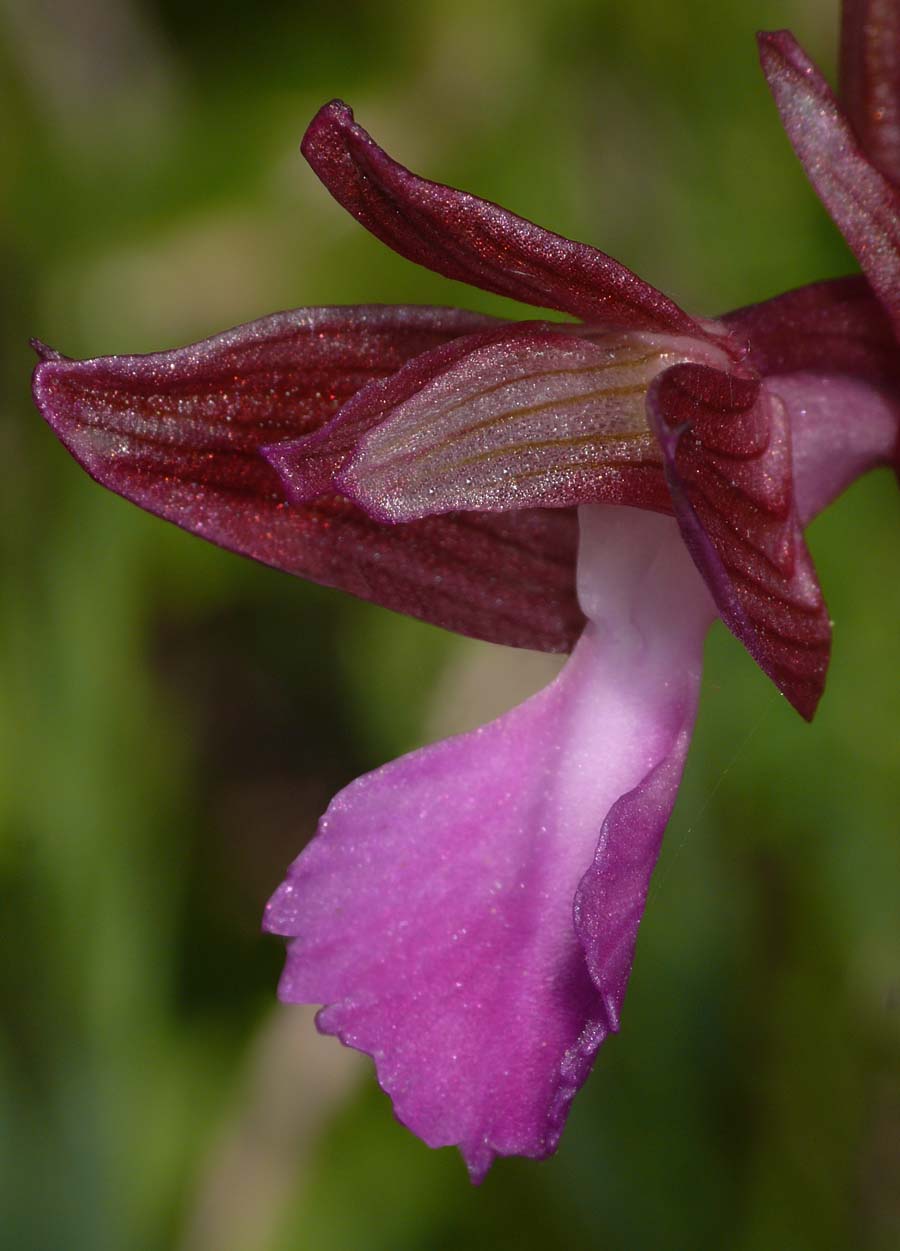
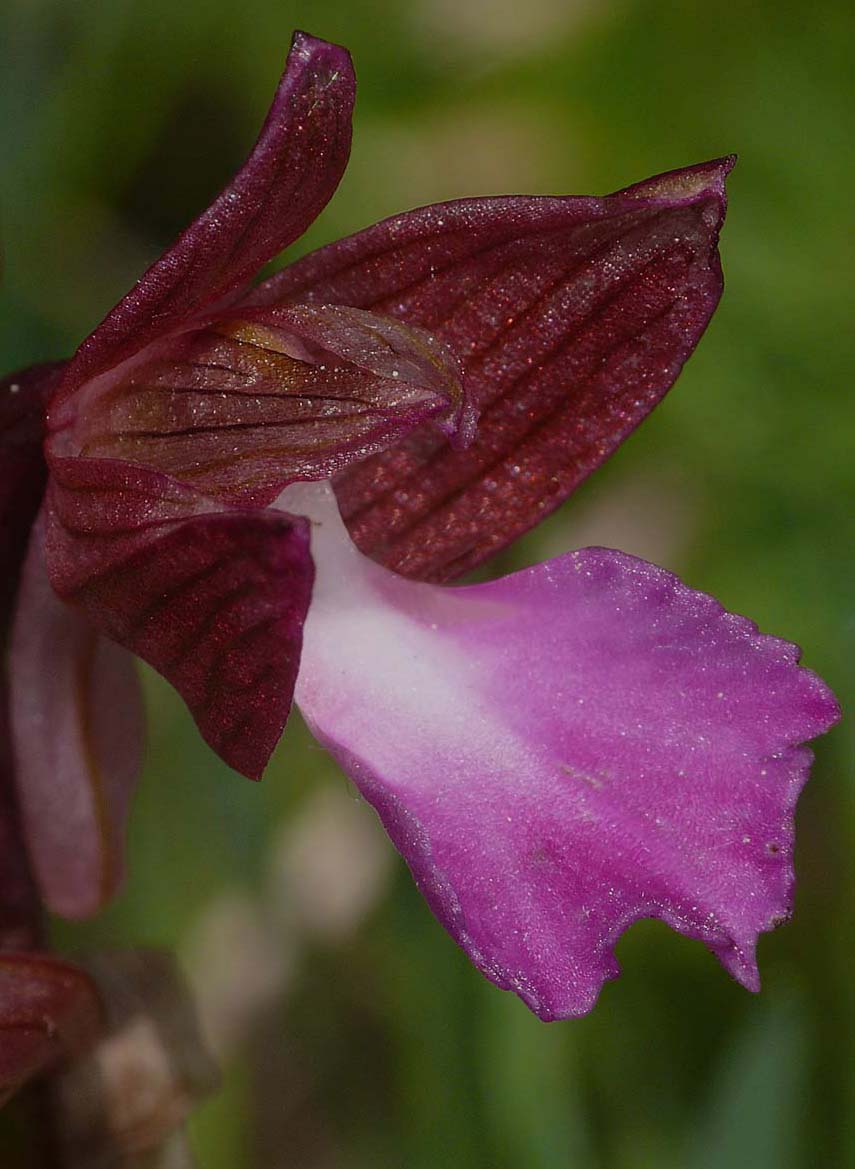
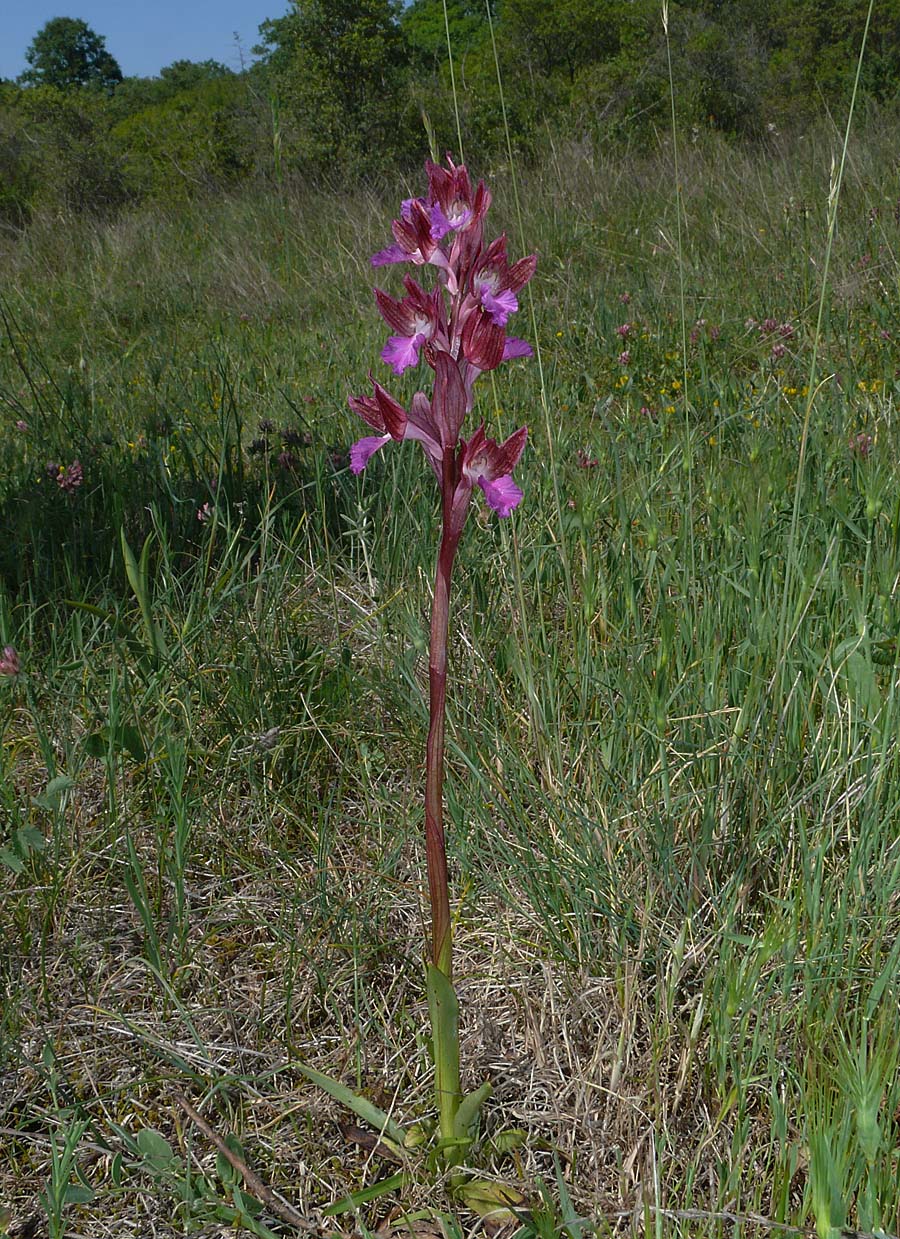
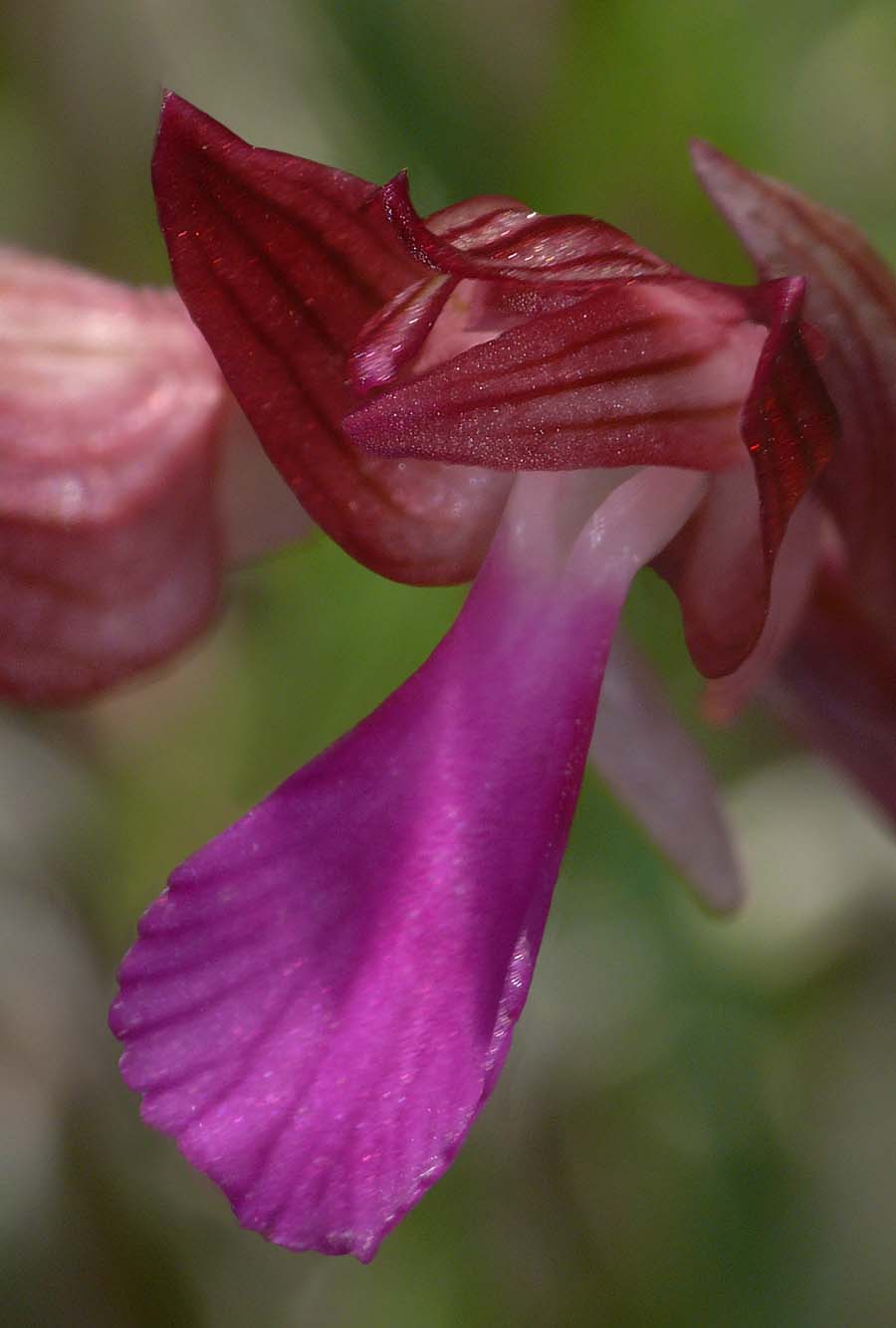
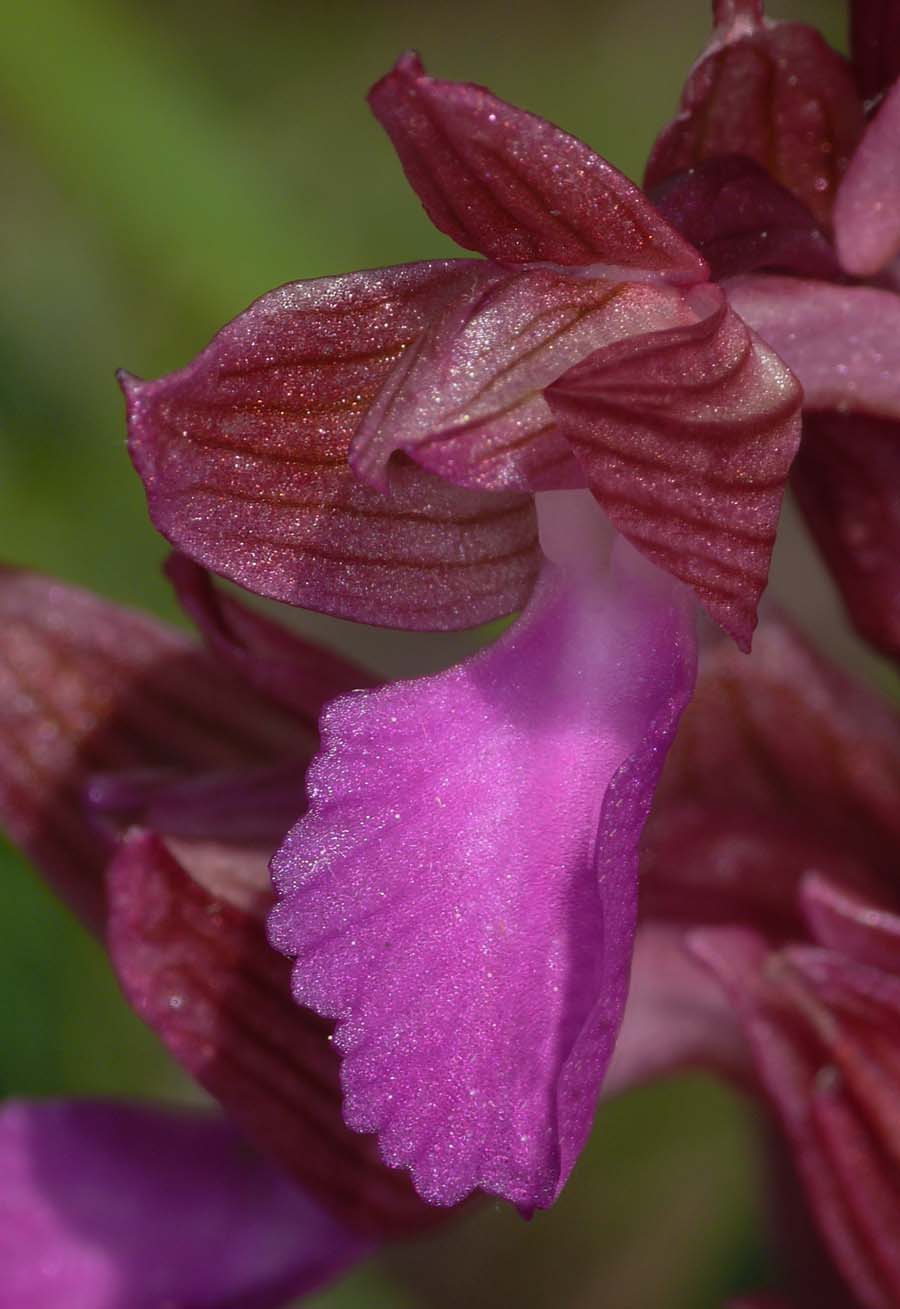
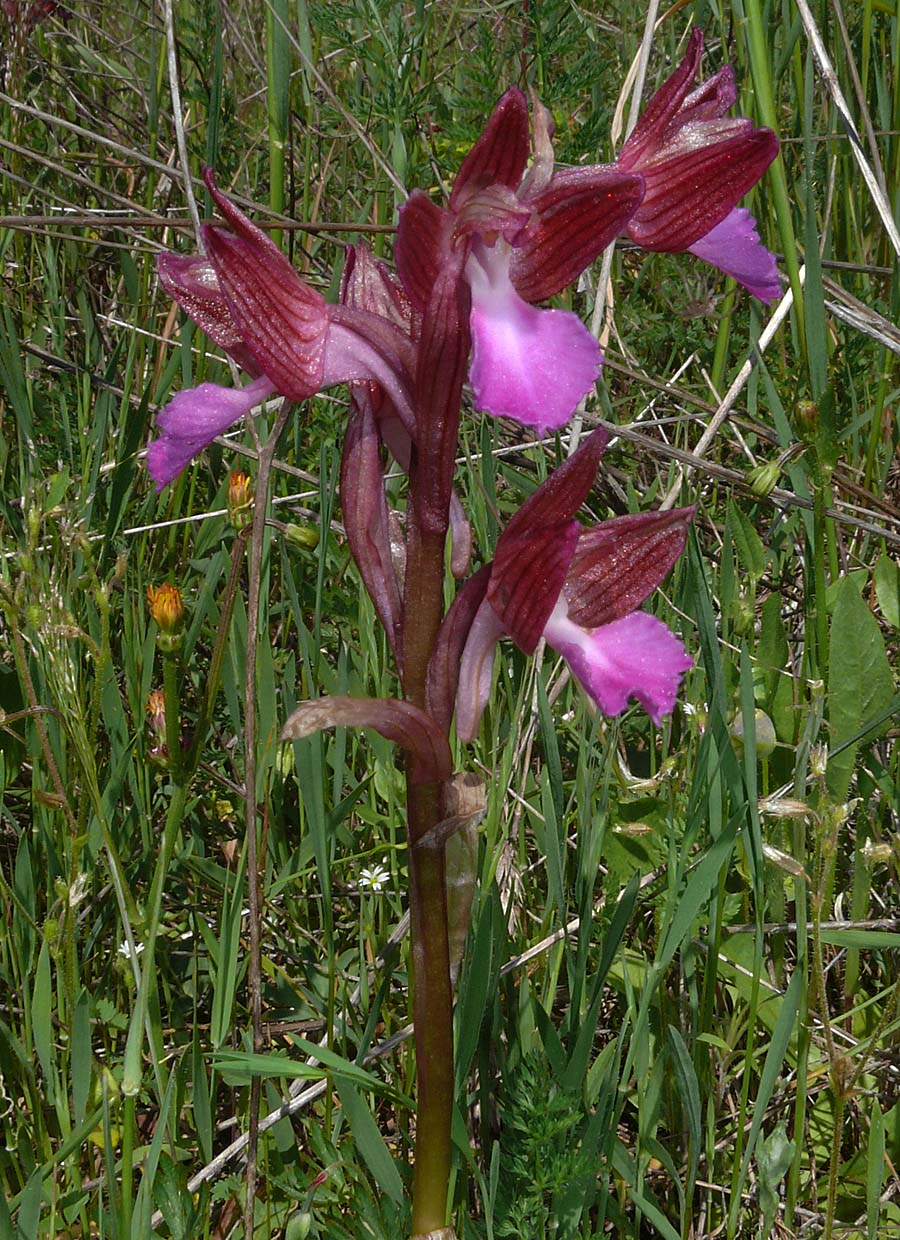
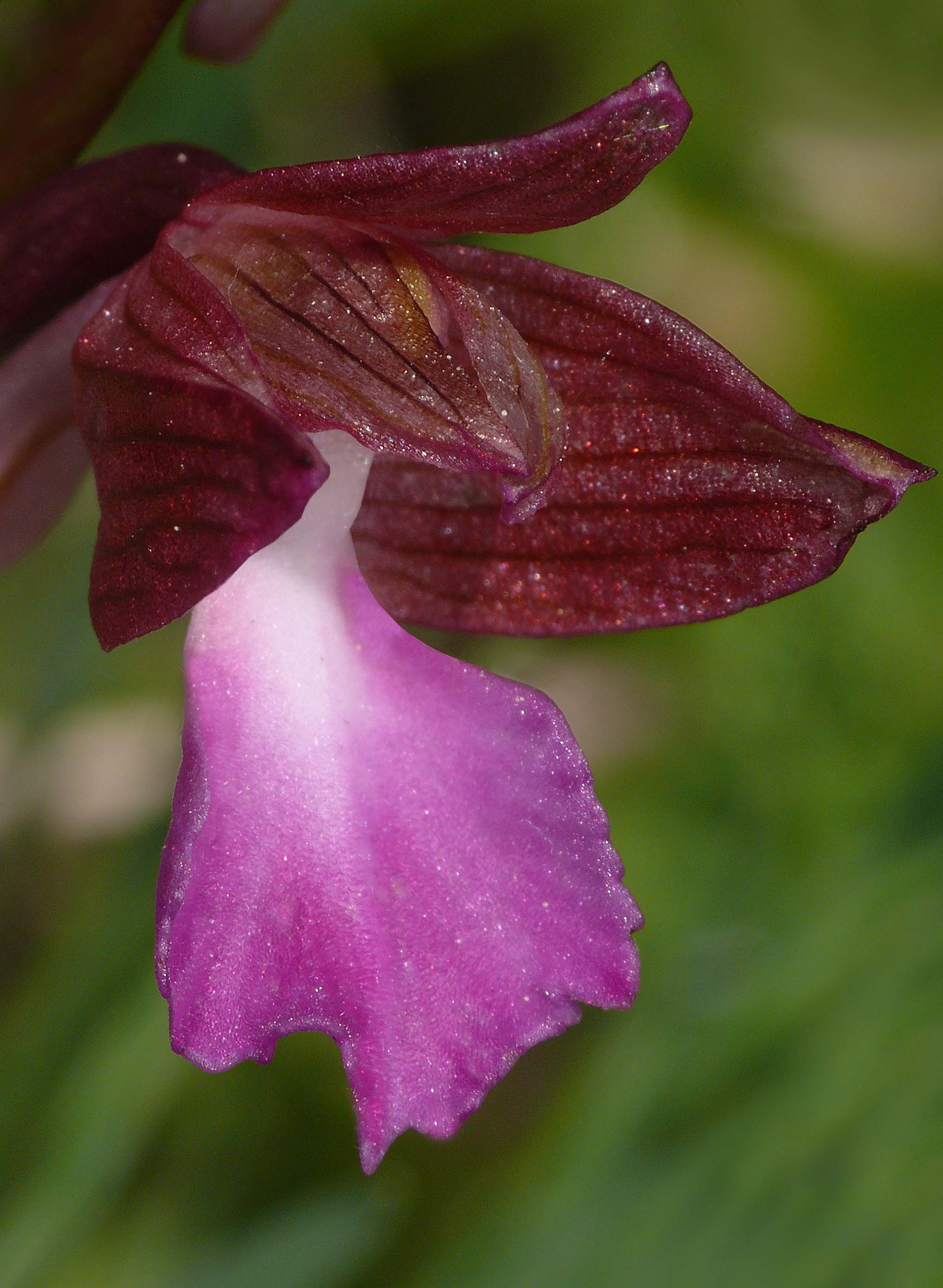
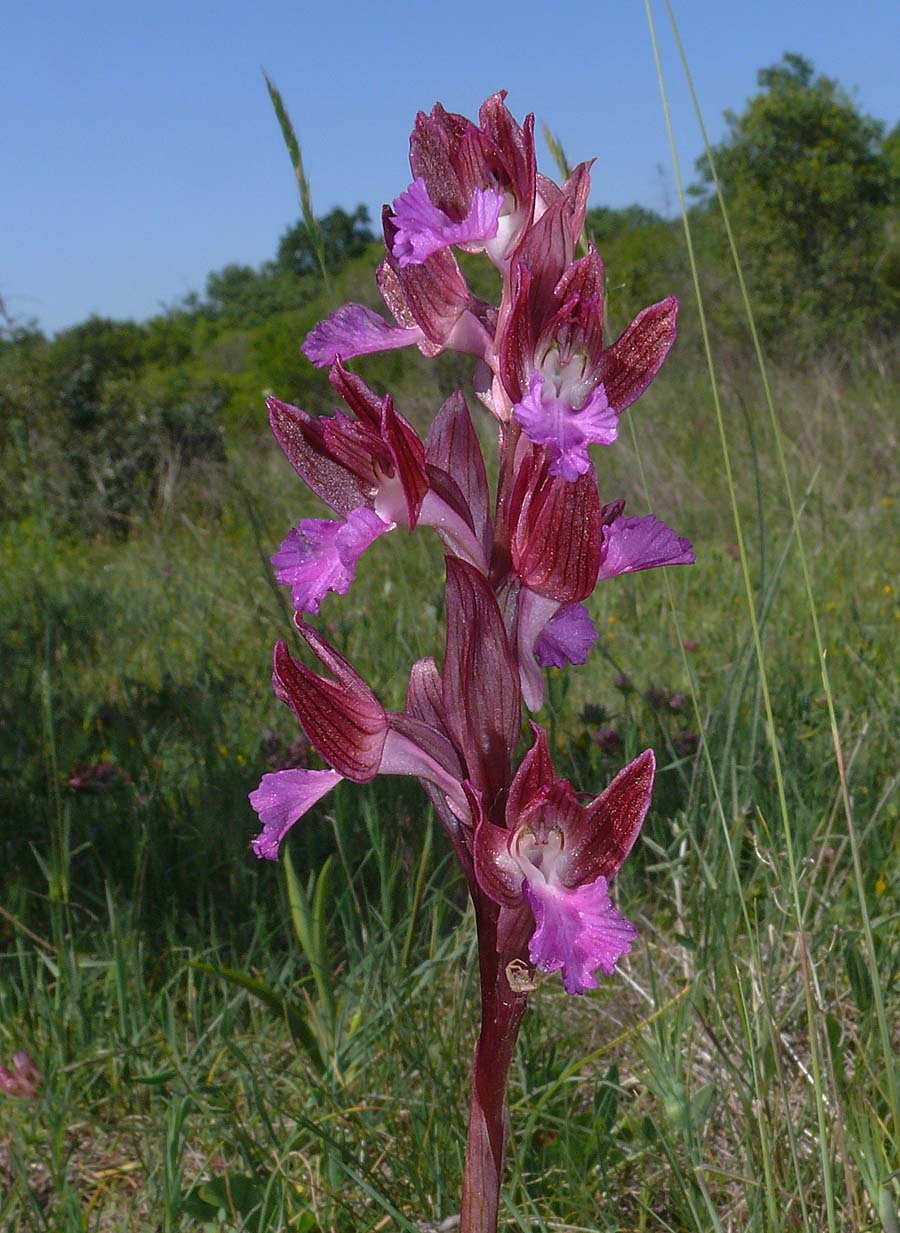
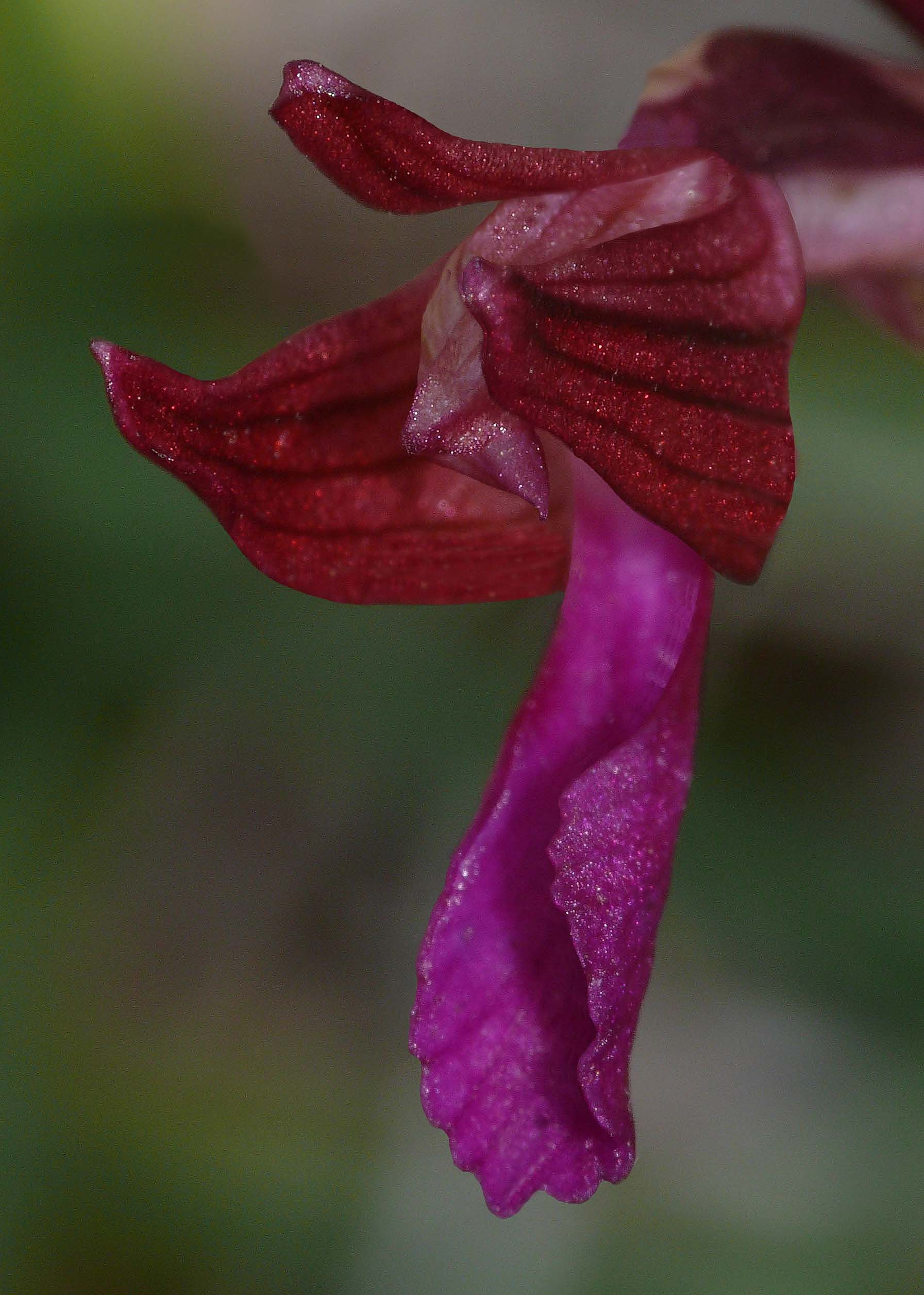
.